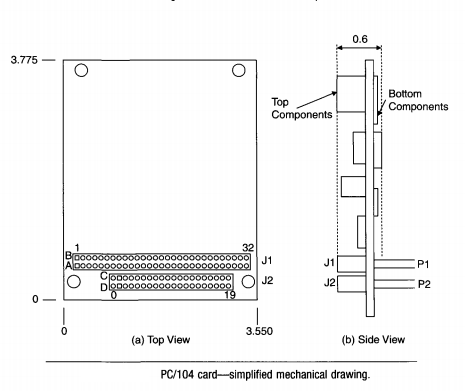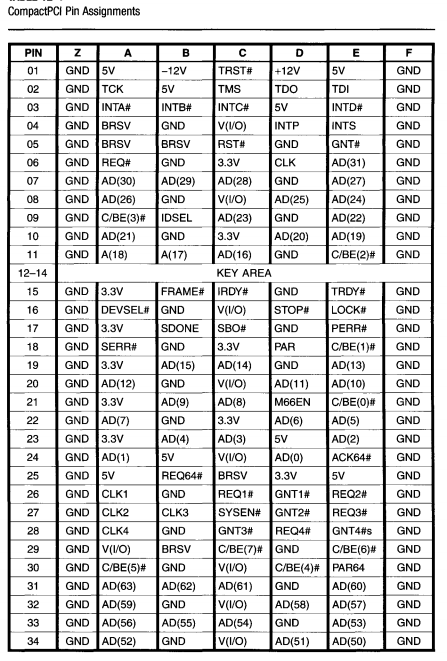Industrial Embedded PCs
As a crude generalization, industrial embedded PC tend to be larger, stand-alone computers housed in a heavy-duty enclosure and composed of several cards plugged into an expansion bus (such as a passive backplane). Single-board computers tend to be small, composed of only one or a few boards, and housed within another device: the embedded application. Industrial embedded PCs are used within a wide range of dedicated applications, including medical equipment, test equipment, industrial process control system, and smart communications systems. Usually, embedded PCs are single-board computers (SBCs) that provide the functionality of a desktop PC's motherboard along with some add-in card features. These SBCs can be PCI-, CompactPCI-, or ISA-based and plug into a passive backplane. They can also be small, all-in-one cards that have little or no expandability.
A typical SBC contains most standard PC components: CPU, RAM, BIOS ROM, keyboard interface, parallel and serial ports, floppy and hard disk interfaces, and video display interface. It may have additional features for embedded applications: watchdog timer, battery backup SRAM, Flash memory, digital I/O ports, Ethernet interface. If you connect a power supply, keyboard, disk drive, monitor, and mouse to a typical SBC you will have a fully operational PC. For a simple application, you may only need to run MSDOS (or a ROM-based DOS) on that PC. But you can also run a version of Microsoft Windows, including Windows CE (developed for embedded PCs).
The advantage of embedding the functionality of a small PC within another piece of equipment is the ability to use the same low-cost hardware and software tools (especially operating systems and programming languages) you already use on a desktop PC. This speeds up a product or project development process tremendously. The disadvantage is that the hardware cost will likely be higher than designing your own simple microprocessor system.
The size of nonstandard, embedded PCs continues to shrink. For example, the DIMM-PC from Jumptec consists of a 66 MHz AMD 486-SX CPU with 16 Mbytes of RAM and 16 Mbytes of Flash ROM, and it measures only 2.7 inches by 1.7 inches by 0.25 inches (just over a cubic inch). Yet, it has enough capability to run a Linux-based Internet server.
The most common standard of industrial embedded PCs has been the PC/104 form factor, first published in 1992. PC/104 is electrically an ISA bus standard that defines cards measuring 3.6 x 3.8 inches and using a stack-through connector that is much more rugged and reliable than ISA edge connectors. PC/104 gets its name from the number of pins on the bus (104), which is just six more than a conventional ISA connector (the extra pins are used for grounds and keying). PC/104 cards do not use a motherboard or backplane. The cards in a PC/104 system (if more than one is used) simply stack together, since each card's stack-through connector is both a plug and a socket. The boards can also be mechanically mounted together to secure them against shock and vibration. The standard defines the mechanical specifications as well as the connector pin assignments for PC/104 cards. It also specifies power supply requirements, such as a maximum current of 2 amps at +5 V for a single PC/104 card. The picture below shows a simplified mechanical drawing of a PC/104 card.

PC/104 defines two connectors: Jl/Pl and J2/P2. For an 8-bit card, equivalent to an XT board, only the 64-pin Jl/Pl is used. A 16-bit (AT) card has an additional 40-pin connector, J2/P2. All electrical design rules for ISA boards apply to PC/104 cards. The pin assignments for PC/104 cards, shown in Table 12-5, are very similar to those for ISA cards but are not exactly the same.
Many manufacturers produce PC/104 cards: single-board computers, video cards, network cards, memory expansion cards, PCMCIA interface cards, and also data acquisition cards. For example. Diamond Systems Corp., a leading PC/104 card manufacturer, produces several data acquisition boards, including the Diamond-MM-AT. This is a multifunction PC/104 data acquisition card with 16 analog input channels and a 12-bit ADC running at conversion rates up to 100,000 samples/sec. It also has two 12-bit analog outputs, 16 digital I/O lines, and a counter/timer. Diamond Systems also has the Prometheus PC/104 card, which is a 486-based SBC with an Ethernet interface and data acquisition hardware.
Compact PCI
A popular standard for industrial PCI-based computers, introduced in 1995, is CompactPCI. This is functionally the same as the conventional PCI bus but uses a different Eurocard form factor for plug-in boards (as the VME bus does) along with a more reliable connector. Compact PCI cards are specified for both 3U (100 mm by 160 mm) and 6U (160 mm by 233 mm) Eurocard sizes. The high-density, the 2-mm-pitch connector is arranged as 47 rows of 5 pins and provides strong card retention capabilities along with resistance to shock and vibration. The metal front-panel of a Compact PCI computer provides good environmental and EMI shielding.
CompactPCI supports both 32- and 64-bit PCI buses. The connector has 220 pins available (15 are lost to a keying area), with many pins connected to the ground (for improved signal shielding) and also controlled signal impedance. This allows Compact PCI computers to have eight slots (compared to four in a standard PCI system). With a PCI bridge IC, a CompactPCI system can easily have 16 slots. The picture below shows the pin assignments for a CompactPCI connector. Many manufacturers support the CompactPCI standard, producing both industrial computers and plug-in cards. Most of these systems use Intel processors and a version of Microsoft Windows or Linux. Some data acquisition cards are even available as CompactPCI.

PXI In 1997, National Instruments developed the PCI extensions for instrumentation (PXI) specification. This is now an open standard that expands. CompactPCI for data acquisition and control systems. PXI defines mechanical, electrical, and software extensions to CompactPCI while allowing interoperability with the older standard. The additional mechanical features are cooling and environmental requirements to allow operation in harsh industrial settings.
PXI adds several electrical features to CompactPCI. First, it defines a 10-MHz reference clock that is distributed to all system peripherals, allowing an easy way to synchronize multiple devices. PXI also adds two trigger buses to the system, to carefully control and synchronize the timing of multiple cards.
In addition, PXI defines a 13-line, daisy-chained local bus that connects each card slot to its nearest neighbors. This provides a high-speed communications channel between cards that does not reduce PCI bandwidth. These local bus signals are both digital and analog.
PXI defines common software requirements, based on Microsoft Windows. This allows PXI application developers to use industry-standard programming languages, such as Visual C/C-I-+, Visual Basic, and Lab VIEW.
Further, all PXI cards must-have device driver software available and also supports the virtual instrument software architecture (VISA) standard. Several hardware manufacturers support PXI with both computers and cards. National Instruments produces PXI chassis and a wide range of data acquisition and instrument modules for PXI. For example, the PXI-6071 is a data acquisition card for PXI with 12-bit resolution and a conversion rate of 1.25 Msamples/sec.
For more information visit https://www.szjawest.cn/.